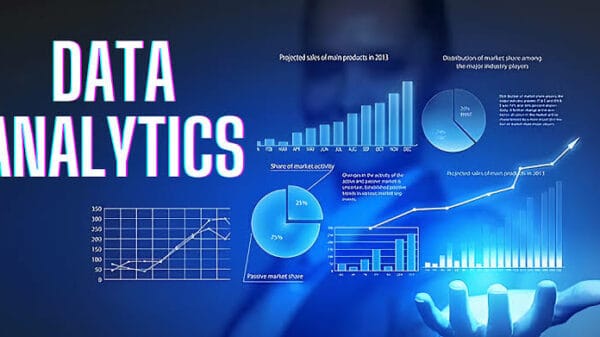Retail and FMCG industry has reached a point where prior known certainties are no more reliable. Specifically for retail, consumer needs have changed tremendously in the last decade. They have grown more advanced in the area of “personalization”. Shoppers are more inclined towards doing business with retailers and FMCG players that recognize them by name, remember their purchase history and offer them relevant product/service recommendations.
The shopper-retailer relationship is witnessing a paradigm shift. It is backed with mobile technology and the wealth of information the customers have at their fingertips. These customers are always on a look out for experiences that are tailored to their individual needs and desires. It has to be a one-to-one relationship with the retailers they are associated with; to the extent that they are ready to switch brands if that expectation isn’t met.
Either upgrade or exit
Seismic shift created across the landscape of customer facing brands has already started sending early signs. Some of the brands, the early birds, were prompt enough to integrate advanced digital technologies and their proprietary data to create that personalized experience. They also witnessed a considerable increase in their revenues. Those are not ready to upgrade will certainly lose big time on customers, share, and profits & may go extinct. Major revenue shift in retail, health care, and financial services is expected in next five years, and all the credit goes to none other than personalization.
Personalization is set to soar high
Brands that emerged during the widespread adoption of digital technology, the digital natives, had that advantage of building their business models around collecting data to respond to customer expectations. In fact, they have succeeded in building strong customer loyalty with help of both, conventional methods of loyalty programs and new methods such as short notice delivery, automatic replenishment, and several others.
Deeper and direct connection that these brands have with their customers, because of the data, helps them understand customer needs and ways to fulfill them. And mind well this is just the beginning, as personalization is set to soar high and touch new skies with the advent in voice recognition and cognitive-computing systems. Brand personalization unlocks the ability to enhance the loyalty by customizing the brand experience for every single contextual user journey. There are brands where most of the value is driven by high-value customers.
One of the best examples is of Netflix. On one hand, they collected data and used it to engage with the customer about their preferences. On the other hand, to compliment data collection, they made the smart move from mailing DVDs to streaming movies and TV shows online. The same kind of a practice is taken up by Amazon and Alibaba. If you see the sidebar of Alibaba, it is highly personalized. They have started creating powerful feedback loops with help of consistently tailored interactions.
Along with digital natives, traditional brands too are gaining momentum
Starbucks, the leaders in the coffee business, entered personalization gimmick in the year 2014 and started making their customers play games. Based on data gathered from past visits and digital interactions, Starbucks started sending interactive and personalized games to loyalty program members, with help of emails and their mobile app. This provided them a fun way to reward loyalties and motivate their customers to try new products and visit their stores more often.
Starbuck’s marketing campaign results tripled, email redemptions doubled, the incremental spending of customers who redeemed offers increased threefold; and, all these due to personalized games. Personalization increased their marketing effectiveness. They reduced their mass marketing and spending. Instead, they now invest more dollars in personalized marketing to “right customers”. This way they incentivized right behaviors. Do you think that’s it…nope? Starbucks is individualizing its brand by delivering each customer their own personalized experience including in-store visits, digital interactions, and even, potentially, products offered.
Walt Disney’s Orlando resort and Shanghai resorts, empower their visitors to use MagicBands to unlock hotel rooms, make purchases and even reserve rides; thorough their smartphones. Disney is busy collecting data from every single interaction and uses it to develop customized offers to their guests. Carnival is introducing “smart medallions” that use similar technology on its hundred-plus cruise ships.
Brand individualization is the future, happening in present
Reading up till now clears that personalized marketing is a good start point and can set you ahead in attaining success. But personalization is not like another marketing challenge. What you as a business or a retailer needs to do is reimagine your business with individualization at its core. This then should be followed with integrating physical and digital experiences for culling out more meaningful connections. Put brand individualization at the forefront of your business strategy to ensure it has its impact, in everything and anything that you do, including marketing, operations, merchandising, and product development. Brand individualization is the future, happening in present. Companies slow at adapting will certainly witness customer loyalty and sales decline.
Underscored potential value and execution challenges
Companies are likely to face significant hurdles in leveraging the full potential of personalization in form of technical glitches such as poor data centralization. Various others include legacy technology not capable of supporting new data; and lack of customer centric initiatives culture or the thought process of the organization to support one-to-one communication, and insufficient impact measuring capabilities.
Enterprises or businesses, have been collecting humongous data since their inception but are unable to aggregate all that to form one universal view of each customer. This forms one-half of the mass. The second half are the ones, who eventually did overcome the data management challenges, but are not equipped with effectively measuring the impact of campaigns. This limits their ability to learn from customer feedback and adapt accordingly, which is to be at the core of individualizing the brand experience.
Lack of dedicated team of data analysts is the prime hurdle and is accompanied with insufficient cross-functional coordination, inadequate creative processes, and culture that is not conducive to innovation. However; the leading challenge is lack of clear roadmap and absence of a clear business case and objective wrt customer personalization.
- Does your company run customer personalization programs?
- Does your company focus on personalization practices, capabilities, and value delivery?
Build data and analytics capabilities
Integrating data from internal and external sources, backed with data from machine learning algorithms to derive to accurate customer – level interactions; is what most of the organizations current capabilities fall short at. May be this is the reason why, enterprises do collect data; but integrating and using it – becomes the toughest part for them. Companies and enterprises, in order to personalize on grand scale, are required to have both; the ability to collect, verify, validate and process large amount of customer, transaction and third party data – and all this on ongoing, reliable and repeatable basis. To add up to this situation; lack of timely data usage is also one of the major shortcomings. A huge number of organizations are able to make limited or no use of real time data.
Successful will be those companies, who commit significant budgets to multiyear data analytic projects. They invest in knowledge and talent, to work with external resources and partners across an ecosystem. These organizations need to leverage their abilities to collect and use customer data, and extract value from their data assets; by partnering with data and analytics solution providers to acquire complementary data assets. In addition, they have to build or acquire the tool sets, talent, and processes to extract signals from this data to drive personalized interactions.
Chirag Shivalker heads the Content team at Hi-Tech BPO, the company defining and shaping the future of research industry. Their data solutions for consumer and b2b market research and analytics, give a complete view of trends, habits, customer experience, and loyalty for varied products and services.
























































































































































































